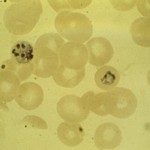Link to Pubmed [PMID] – 3084797
J Mol Evol 1986 ; 23(1): 11-22
We have determined the sequences of three recombinant cDNAs complementary to different mouse actin mRNAs that contain more than 90% of the coding sequences and complete or partial 3′ untranslated regions (3’UTRs): pAM 91, complementary to the actin mRNA expressed in adult skeletal muscle (alpha sk actin); pAF 81, complementary to an actin mRNA that is accumulated in fetal skeletal muscle and is the major transcript in adult cardiac muscle (alpha c actin); and pAL 41, identified as complementary to a beta nonmuscle actin mRNA on the basis of its 3’UTR sequence. As in other species, the protein sequences of these isoforms are highly (greater than 93%) conserved, but the three mRNAs show significant divergence (13.8-16.5%) at silent nucleotide positions in their coding regions. A nucleotide region located toward the 5′ end shows significantly less divergence (5.6-8.7%) among the three mouse actin mRNAs; a second region, near the 3′ end, also shows less divergence (6.9%), in this case between the mouse beta and alpha sk actin mRNAs. We propose that recombinational events between actin sequences may have homogenized these regions. Such events distort the calculated evolutionary distances between sequences within a species. Codon usage in the three actin mRNAs is clearly different, and indicates that there is no strict relation between the tissue type, and hence the tRNA precursor pool, and codon usage in these and other muscle mRNAs examined. Analysis of codon usage in these coding sequences in different vertebrate species indicates two tendencies: increases in bias toward the use of G and C in the third codon position in paralogous comparisons (in the order alpha c less than beta less than alpha sk), and in orthologous comparisons (in the order chicken less than rodent less than man). Comparison of actin-coding sequences between species was carried out using the Perler method of analysis. As one moves backward in time, changes at silent sites first accumulate rapidly, then begin to saturate after -(30-40) million years (MY), and actually decrease between -400 and -500 MY. Replacements or silent substitutions therefore cannot be used as evolutionary clocks for these sequences over long periods. Other phenomena, such as gene conversion or isochore compartmentalization, probably distort the estimated divergence time.

